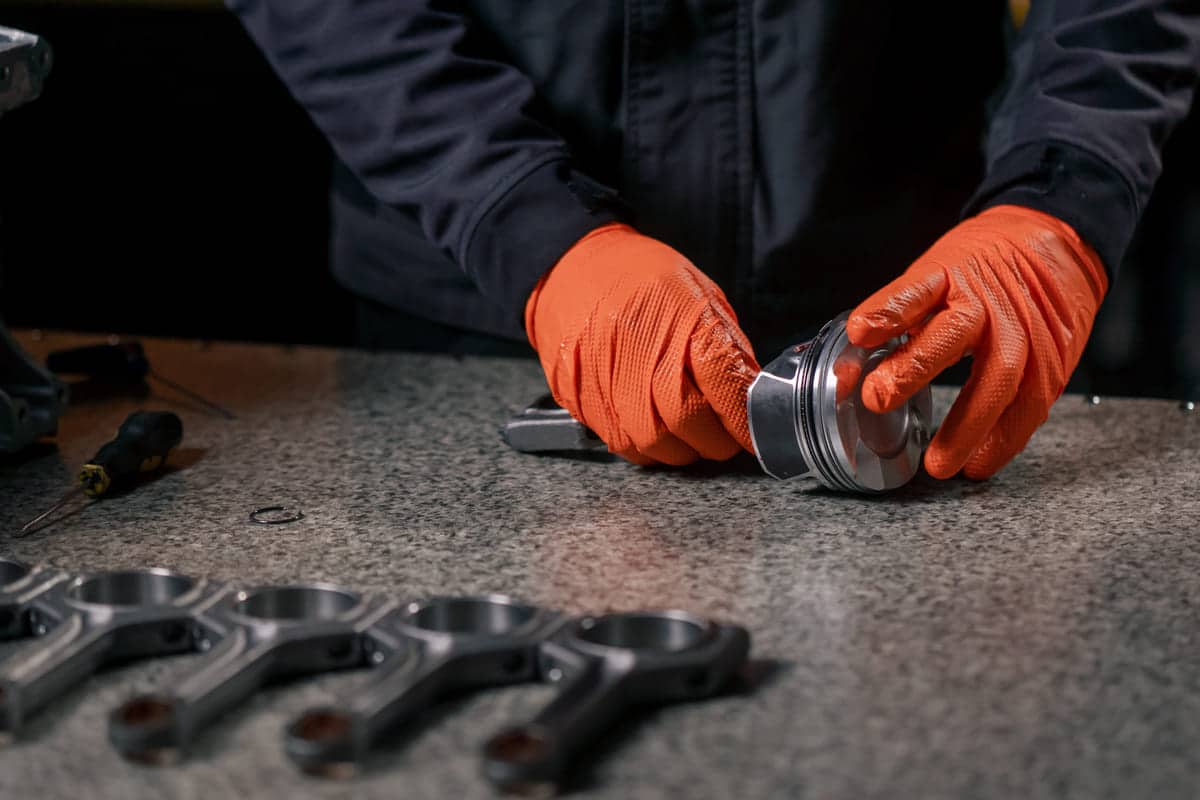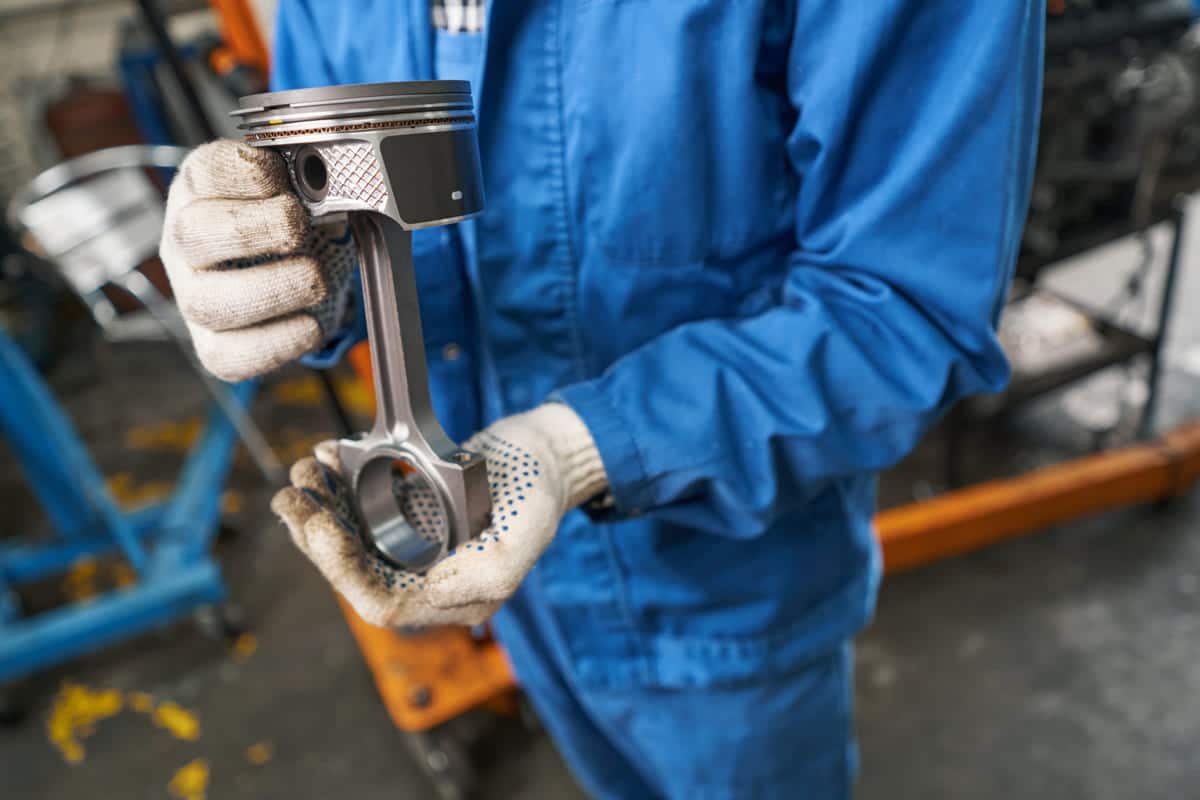Pistons work in harsh conditions, high pressure and temperature. Made from tough materials like aluminum alloys or cast iron, they’re key to efficiency. Their motion is what converts chemical energy into mechanical power, powers many machines.
What is a Piston?
A piston also known as automotive piston, is a cylindrical part in engines. It moves up and down in a cylinder. This movement creates power.
Pistons connect to the crankshaft through connecting rods. The crankshaft converts this up and down motion into rotational motion.
Made from strong materials like aluminum or iron, pistons can handle high pressure and temperature. They’re needed for the engine to run smoothly.
When fuel burns in the engine, it creates gas pressure. This pressure pushes the piston down, creates power. The crankshaft then transfers this power to the wheels or other machines.
Different engines have different types of pistons but their job remains the same: to convert energy into motion.
References
- Piston. Retrieved from https://en.wikipedia.org/wiki/Piston#
- Piston. Energy Education. Retrieved from
- Pistons are made up of which of the following materials?. Testbook. Retrieved from
What are the Major Components of Piston?
A piston has several parts that work together to make the engine run. Each part has a role in the piston’s movement.
- Piston Head
- Piston Rings
- Piston Skirt
- Piston Pin (or Wrist Pin)
- Connecting Rod
Now that you know the components, you can see how pistons create power.
References
- Piston and Piston Rings. University of Washington. Retrieved from
How does a Automotive Piston Works?
A piston is needed for an engine to run. It moves up and down in a cylinder to convert fuel into power.
Step 1: Intake Stroke
The cycle starts with the piston at the top of the cylinder, known as Top Dead Center (TDC). As the piston moves down, it creates a vacuum in the cylinder. The intake valve opens and a mixture of air and fuel enters the cylinder. This mixture comes from the or fuel injectors.
Step 2: Compression Stroke
Once the piston reaches the bottom of the cylinder, called Bottom Dead Center (BDC), the intake valve closes. The piston then moves up the cylinder, compressing the air-fuel mixture. This compression makes the mixture very dense which is needed for efficient combustion. Compressed fuel burns better and produces more power.
Step 3: Power Stroke
At the top of the compression stroke, the ignites the compressed air-fuel mixture. The explosion, called combustion, creates a high pressure force that pushes the piston down with a lot of energy. This downward motion is what creates the engine’s power. The connecting rod transfers this motion to the crankshaft, converts the piston’s linear motion into rotational motion.
Step 4: Exhaust Stroke
After the power stroke, the piston reaches BDC again. The exhaust valve opens and as the piston moves up the cylinder, it pushes the burnt gases out through the exhaust valve. These gases then exit the engine through the . Once the piston reaches TDC again, the exhaust valve closes and the cycle starts again.
These steps happen over and over and over, many times a second to keep the engine running. The piston’s up and down motion creates the power to drive the vehicle or machinery.
References
- Pistons. How a Works. Retrieved from
- How the Piston Works. MS Motorservice. Retrieved from

What are the Types of Piston?
Pistons come in many shapes to fit different engine needs. The most common are flat-top, dome and dish pistons.
Flat-Top Pistons
Flat-top pistons have a flat top. These pistons are used in many engines including standard car engines. The flat top provides balanced combustion by mixing the air-fuel mixture evenly. This design keeps the compression ratio stable and produces more power.
Dish Pistons
Dish pistons have a concave, bowl-like top. Found in turbocharged or supercharged engines. The recessed design reduces the risk of engine knock. Dish pistons allows better fuel distribution and are good for engines that need lower compression ratio. Good for boosted applications.
Dome Pistons
Dome pistons have a raised center on top, creating a dome shape. Used in high-performance and racing engines. The raised center increases the compression ratio which helps the engine produce more power. Dome pistons also improves thermal efficiency by better fuel atomization. Good for engines that need more power and performance.
These piston types run efficiently based on their application. Knowing these shapes will help you choose the right piston for your engine.
References
- Piston Types. Retrieved from
What is a Piston Made of?
Pistons are made of strong materials because they need to withstand high temperatures and pressures. The most common material for pistons is aluminum alloy. Aluminum is light and has good heat conductivity.
Some automotive piston are made of steel. Steel pistons has extra strength. Engineers use steel for heavy-duty engines or where high durability is needed.
Cast iron was used in older engines. It is strong but heavy. Modern engines rarely use cast iron because it doesn’t handle high speeds well.
In performance engines, some pistons are made of forged materials. Forging makes the material denser and stronger, good for racing applications.
Each piston type is for different engine needs. Manufacturers choose the material based on the engine’s requirements and performance expectation.
References
- What is a Piston?. Digit Insurance. Retrieved from https://www.godigit.com/motor-insurance/automobile/what-is-a-piston
What are the Characteristics of a Piston?
Automotive piston are engine parts that converts fuel into motion. They must have these properties to work well and reliable.
- Durable Material
- Lightweight
- Heat Resistant
- High Strength
- Smooth Surface
- Precise Shape
- Oil Channels
- Thermal Stability
- Corrosion Resistant
These are some of the most prominent characteristics of pistons.


